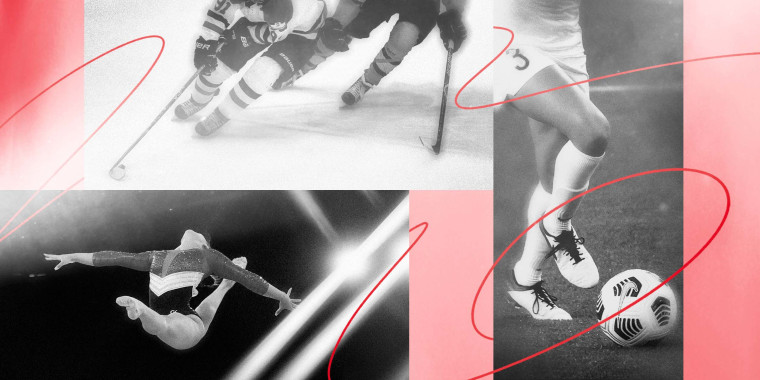On Oct. 1, the National Women’s Soccer League canceled its weekend games as it reeled from reports of sexual abuse against its players. When play resumed days later, players made a leaguewide protest with a show of solidarity. Players from both teams emptied the benches and gathered together arm-in-arm in the center circle.
The abuse scandal now joins several other high-profile cases from other high-profile women’s sports.
The players were responding to a report by Meg Linehan of The Athletic that described alleged abuse carried out against former players Mana Shim and Sinead Farrelly over the last decade by Paul Riley, who was subsequently fired as coach of the North Carolina Courage. The allegations dated to Riley’s time as Portland Thorns coach in 2014-15. "He's a predator,” Shim told USA Today in an interview. “He sexually harassed me. He sexually coerced Sinead and he took away our careers."
The players protested in the sixth minute of each game to represent the six years the two players were forced to stay silent about their abuse. Riley has denied the allegations.
The scandal now joins other high-profile cases from other high-profile women’s sports, most notably USA Gymnastics. Sexual abuse has always been a problem in women’s sports, but the full extent of the issue across the sports world is most likely not yet known. The NWSL scandal has shaken the league, with calls for resignations of abusive staff and ownership who enabled the abuse across multiple teams.
Some fans and observers of the league have wondered if the NWSL will survive. The question is a stark reminder of how fragile the state of professional women’s sports is, even in the year 2021.
Historically, women’s sports leagues in the U.S. have typically sprung up in the wake of well-publicized world class victories by U.S. national teams. The Women’s United Soccer Association, the first try at a women’s pro soccer league, was started up in 2001, two years after Brandi Chastain ripped off her shirt after winning the 1999 Women’s World Cup. The league lasted just two seasons.
The next attempt was Women’s Professional Soccer, which began play in 2007, in the midst of a run of three straight Olympic gold medals for the U.S. That league folded in 2012 and was succeeded by the NWSL, which added four franchises to four that came over from WPS.
Soccer leagues aren’t the only women’s pro sports organizations to fail in North America. In 2019, the Canadian Women’s Hockey League ceased operations after 12 seasons. In 1999, the American Basketball League, which started three years earlier in competition with the WNBA, closed its doors.
Professional women’s sports have always suffered from a lack of funding and media attention relative to its male counterparts. In 2020, the NWSL signed a three-year TV rights deal with CBS and the streaming platform Twitch, which puts the season opener and championship games on the broadcast channel CBS and 14 additional games on the cable channel CBS Sports Network. In comparison, Major League Soccer, the premier men’s soccer league in the U.S., has a significantly larger financial deal with ESPN, Univision and Fox Sports, with an agreement to air at least 34 games during regular Friday and Sunday night broadcast windows.
This lack of interest and attention is systemic across women’s sports and is due to systemic misogyny. Most people believe women’s sports to be an inferior entertainment product because “men are naturally more athletic.” But the games themselves are often different. Avid basketball fans will tell you that while the men’s game is much more physical, and is filled with dunks, the women’s game is more free flowing. Players are just as, if not more, skillful, and there’s only the occasional dunk. Women’s soccer is much the same, with a high skill level and beautiful goals that rival anything from the men’s game.
Professional women’s sports have always suffered from a lack of funding and media attention.
But men, almost from birth, generally get more financial resources, coaching resources and training resources than women, all based on the assumption that they are inherently superior to women in athletics. It’s a recipe not only for struggling pro leagues, but for enabling the very abuse we’ve seen revealed in soccer and gymnastics.
There is no mass movement devoted to ending sexual abuse in women’s athletics. Instead, widespread effort this year to exclude trans women from games was wrongly dubbed the campaign to “save women’s sports.” It’s a serious misallocation of resources and attention, not thriving on need, but on furthering bigotry.
Until women are seen as equals, not only in dignity but in athletic worth, the abuse will only grow and fester in the darkness of inattention.

